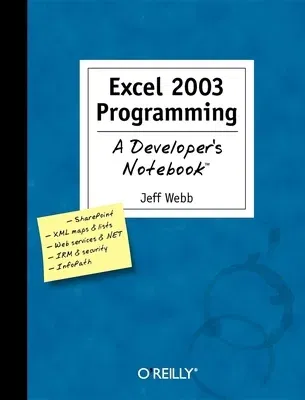On the surface, it doesn't appear as if much in Excel 2003 has changed.
There are a handful of new objects and the user interface is largely the
same. But beyond a superficial glance, you'll see that there are
fundamental shifts implied by the new features: Lists, XML, web
services, .NET, and InfoPath build a framework for entirely new ways to
exchange data with Excel. In fact, that's much of what Excel 2003 is all
about--solving problems that deal with teamwork-- collecting and sharing
data, programming across applications, and maintaining security.The
latest in our Developer's Notebook series, this guide introduces
intermediate to advanced Excel VBA programmers to the newest programming
features of Excel 2003, --focusing just on what's new--so you can get up
to speed quickly. Light on theory and long on practical application, the
book takes you directly to the topics you'll want to master through a
series of hands-on projects. With dozens of practical labs, you'll be
able to decide for yourself which new aspects of Excel will be useful or
not in your own work. And best of all, you won't have to buy an
expensive revision of a legacy Excel programming tutorial to learn about
the new features--if they're covered there at all.Excel 2003
Programming: A Developer's Notebook shows you how to work with lists
and XML data, secure Excel applications, use Visual Studio Tools for
Office, consume Web Services, and collect data with Infopath. Each
chapter is organized into a collection of labs, each of which addresses
a specific programming problem. You can follow along to complete the lab
on your own, or jump ahead and use the samples the author has built for
you.The new Developer's Notebooks series from O'Reilly covers important
new tools for software developers. Emphasizing example over explanation
and practice over theory, they focus on learning by doing--you'll get
the goods straight from the masters, in an informal and code-intensive
style that suits developers. If you've been curious about Excel 2003,
but haven't known where to start, this no-fluff, lab-style guide is the
solution.

